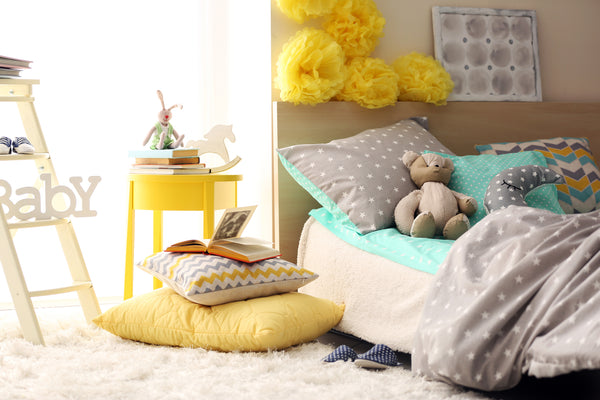Guest Post by Jenny Wise from Special Home Educator
As most parents of autistic children know, making a child on the spectrum comfortable will often involve some tweaks and modifications. People on the autism spectrum often receive too much or too little stimulation from the world around them, so their environment should be designed to provide the most pleasant sensory experience.
In the case of a bedroom, you need a space that makes your child feel comfortable and safe, but also one that soothes them into a state of sleepiness. This is easily achieved by focusing on the following areas.
Colors
A room’s color scheme can have a huge effect on mood, and this is especially true for children with autism. Choose colors that are soothing and promote sleep - shades of blue are often considered the best. That said, it is important to keep your child’s preferences in mind - if they love pink or yellow, go for that! Just make sure to use muted pastel tones instead of bright ones.
Lighting
Sensitivity to bright lights is a common symptom of autism, so make sure to keep lighting muted. Fluorescent lights, in particular, are a no-no, with more than half of people with autism being severely sensitive to them. Incandescent light bulbs are a good idea, as are dimming switches your child can control.
Furniture
The bed is, of course, the most important piece of furniture in the bedroom. There is not a “correct” type of bed for a child with special needs, but there are a few key tips for making the right choice. Avoid using beds with very light frames, as a child could easily injure themselves by moving it, and bolt it down (or against the wall) to further protect them from this.
Autism swings are also popular, as the rocking motion can be greatly calming to over- or under-stimulated children. They also give the child a place to relax that’s perfect for reading, listening to music, or watching videos.
What about desks? The Asperger/Autism Network recommends parents of children with autism always remain available for help with homework. For this reason, you should consider setting up a homework station somewhere else in the house more convenient for you and leaving the bedroom for sleep and play. However, if your child loves drawing or creating, you will want to have a child-sized desk in the room.

Storage
Visual clutter can be a source of overstimulation and stress for children with autism. The best way to prevent this is to ensure that everything in the room has its correct place and that there is ample storage for everything.
Mama in the Now has a great article on room organization for children with autism, which is worth checking out. Tips include using see-through containers so your child knows exactly what is where, and using labels and color coding to make the system clear.
Smells
Several aromatherapy oils are said to have calming and stress-busting properties, which can be beneficial for children with autism. They also make the room smell nice which is always a good thing. Do make sure to choose oils with your child so they can select which ones they like - the most relaxing smell in the world won’t do much good if it smells bad to them.
Flooring
Flooring is also an important consideration. You want something that’s soft and padded, both to protect from falls and to minimize noise. Carpet is the most obvious choice, preferably made with natural fibers. Laying down rugs of various thicknesses and textures creates a fun sensory experience while helping define different “areas” in the room.
As you can see, many of the general concepts of soothing interior design apply here, from muted tones to cozy textures and relaxing smells. However, since every child with autism is different, it is crucial that parents develop the sensory bedroom in collaboration with their child. What works for one child won’t necessarily work for another, and the ideal bedroom is one designed around their specific needs and sensory preferences


